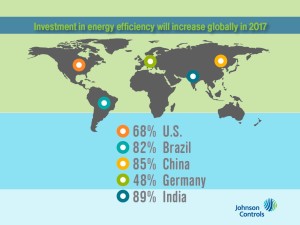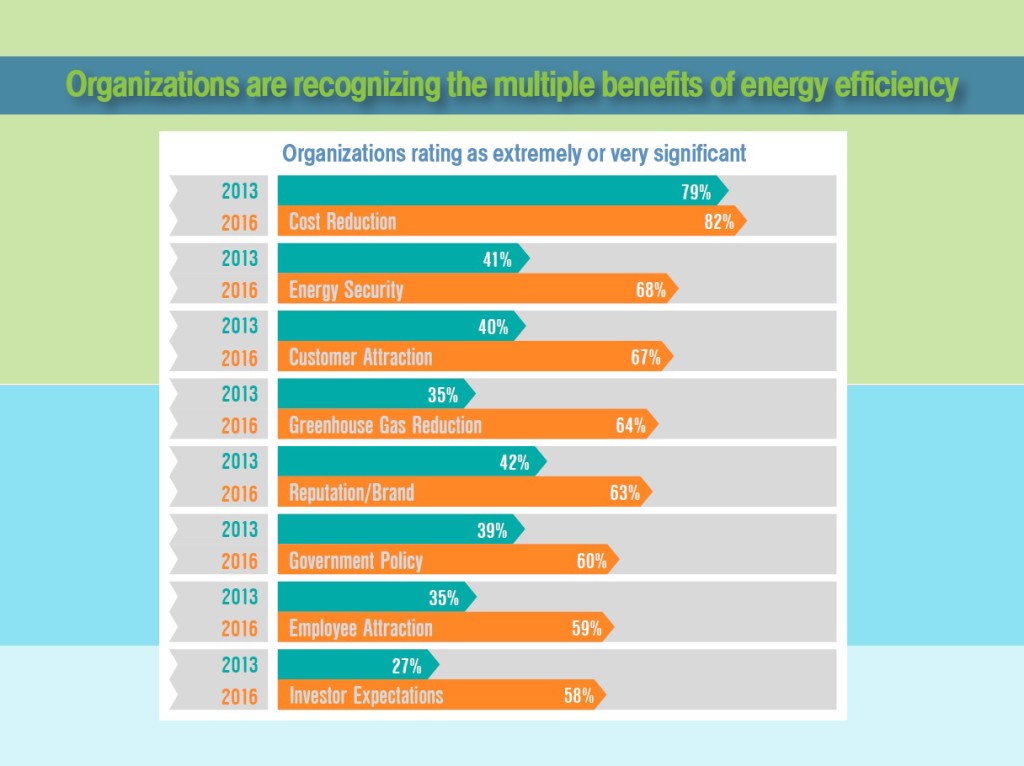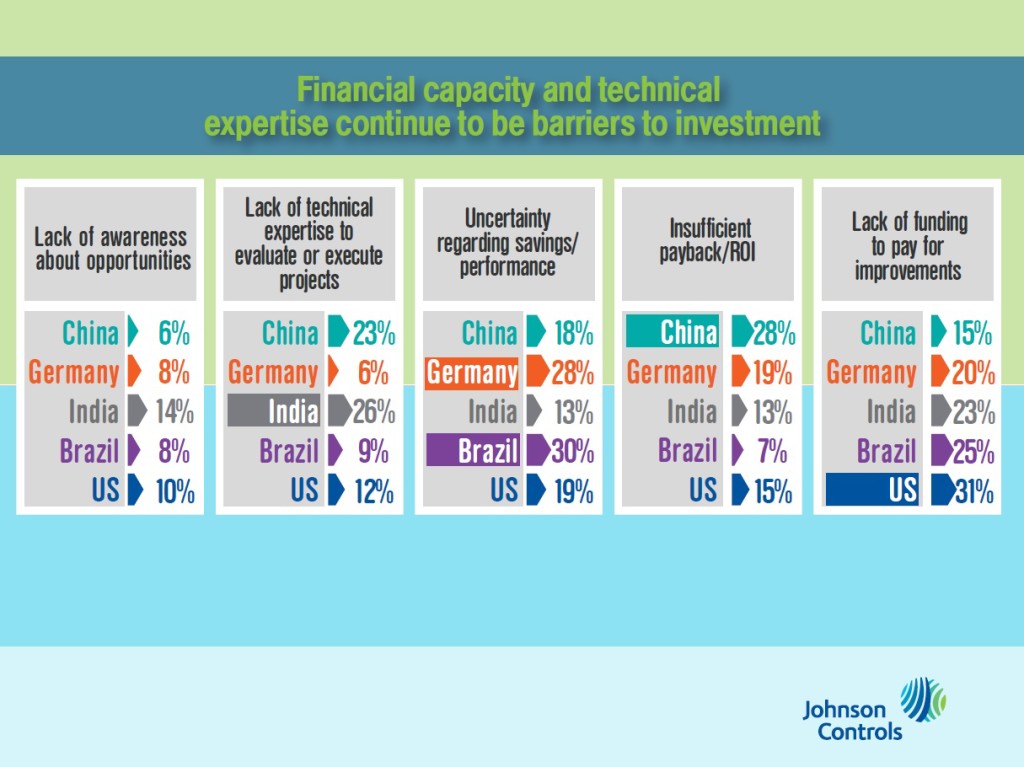A recent study, conducted by Johnson Controls in which 1,243 energy and facility management executives were surveyed, concluded that energy efficiency investments are at an all-time high. The study investigated “planned investments, key drivers, and organizational barriers for improving energy efficiency.” The following will breakdown some of the key findings of the study.
Growth of Energy Efficiency Investments
The number of organizations worldwide that have begun to pay attention to energy efficiency has grown from 37 percent in 2013 to 50 percent in 2016. Organizational investment into energy efficiency continues to grow, and is expected to reach 68 percent in the U.S. by 2017.

Not surprisingly, the main driver for energy efficiency investments is cost reduction, which rose from 79 percent in 2013 to 82 percent in 2016. Energy security and customer attraction followed behind cost reduction as the second and third most important benefits of energy efficiency. With the exception of cost reduction, the other seven categories, as depicted by the graph below, have seen tremendous increases since 2013.

According to Bill Jackson, president of Building Efficiency at Johnson Controls, “Energy efficiency is the center of a major transformation of our buildings, energy systems and urban infrastructure. Investment in smart, sustainable and resilient buildings is key to increasing urban efficiency and delivering its many social, environmental and economic benefits.”
According to the study, HVAC stands as the most popular energy efficiency improvement at 63 percent. This is not surprising, as HVAC systems can be directly responsible for over 60 percent of a building’s electrical operations. The five other most popular energy efficiency improvements include energy-focused educational programs (52%), building controls improvements (46%), water efficiency improvements (42%), onsite renewable energy (36%), and building systems integration (34%).
Investment Barriers
Despite a surge in energy efficiency interest, barriers to investment, including lack of awareness, lack of technical expertise, savings uncertainty, insufficient payback/ROI, and lack of funding, continue to persist. Of all the barriers, a lack of funding remains the largest hurdle to overcome in the U.S.

Click to download the whole Johnson Controls report.




